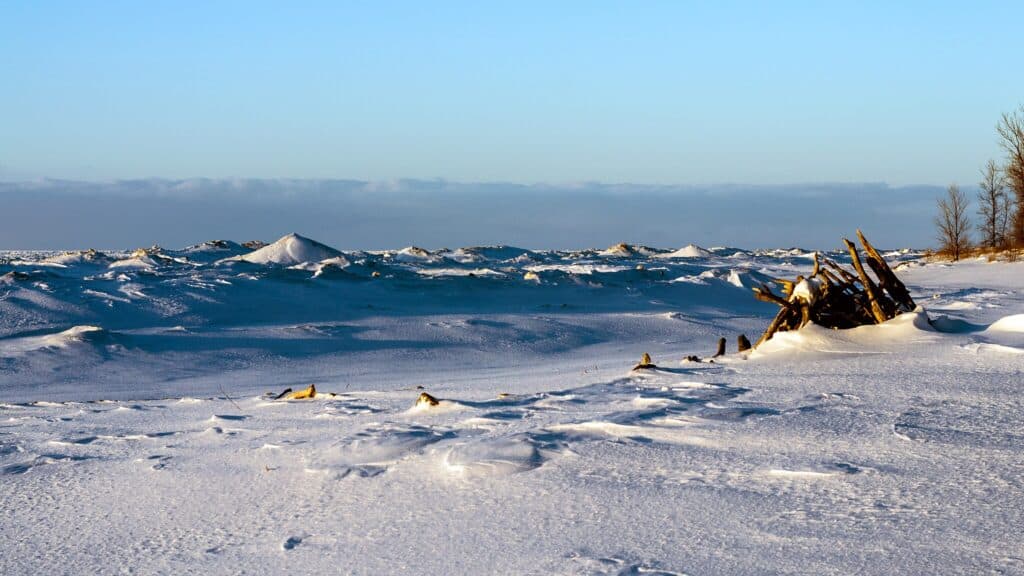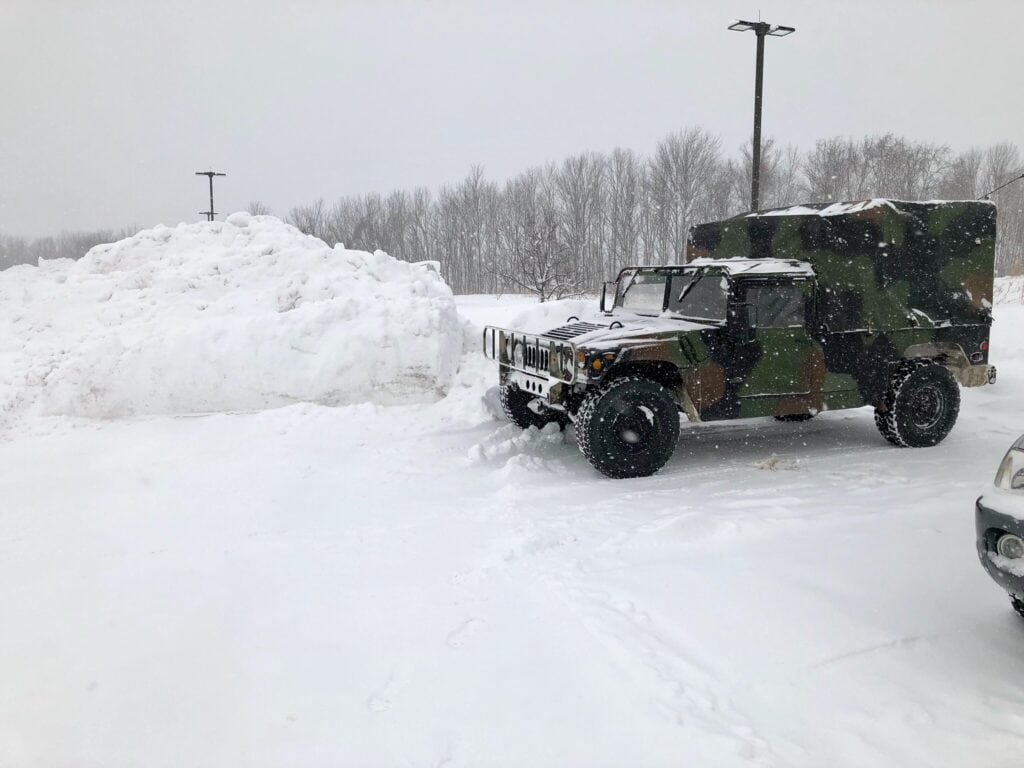Lake Effect: The real reason Erie gets so much snow
Thanks to its namesake lake, Erie gets more than 100 inches of lake effect snow each winter.
Erie, Pennsylvania, is one of the snowiest cities in the country. Last winter, Erie saw almost 112 inches of snow—second only to Syracuse, New York, which got 115. Yet the city isn’t among the coldest places in the U.S., with that distinction going to cities in Alaska and the upper Midwest, where the temperature rarely crawls above freezing for months at a time.
So if it’s not constantly, bitterly cold, why does Erie get so much snow? The answer lies in the lake effect. Erie sits on the southern shore of its namesake Lake Erie.
Western Pennsylvanians often invoke the lake effect when shrugging off blizzard conditions. But what does it actually mean for a place to get “lake effect snow”? We’ve broken it down so that the next time someone marvels at all of Erie’s snow, you can wow them with your science skills.
What does “lake effect” actually mean?
The lake effect occurs when cold, dry air moves over warmer lake waters. As the cold air sweeps across the lake’s surface, some of the lake waters evaporate, warming the air and thickening it with moisture. The warmer air rises, cooling again as it forms clouds. And when it reaches colder land, it dumps all that gathered moisture as precipitation—sometimes rain, but usually snow—concentrated in intense, localized bands. The longer the cold air travels over the water—the distance the wind travels over water is called the “fetch”—the more moisture gathers. As a result, a longer fetch leads to heavier snowfall.
The places that get the most lake effect snow sit downwind of the Great Lakes—for example, Syracuse and western and central New York, downwind of Lake Ontario; the Upper Peninsula of Michigan, downwind of Lake Superior; and, of course, Erie and the surrounding region, downwind of Lake Erie.

Why Lake Erie is a snowmaking machine
The shallowest and warmest of the Great Lakes, Lake Erie is prime territory for snowmaking. Though Lake Erie freezes more quickly than other lakes (and thus freezes its ability to make lake effect snow), the lake is still unfrozen in late fall and early winter and can play its part in the lake effect.
Plus, while the city of Erie may be relatively flat along the lakeshore, the terrain rises as it moves away from the lake. When the moist air meets the hills, it rises even higher, cooling further and producing even more snow. That effect, plus the way higher elevations can “trap” weather systems in place longer, is why hilly areas south of Lake Erie often see greater snowfall totals than the lakeshore itself.
When the lake effect hits
Erie usually gets its first snow in mid-to-late November, and as winds move down from Canada over Lake Erie, the snow keeps coming. December is usually the snowiest month for lake-effect snow specifically.
In 2017, Erie’s snowfall broke records when a Christmas snowstorm dropped more than 65 inches of lake effect snow over 36 hours—the biggest snowfall from a two-day storm in Pennsylvania since the state began keeping records more than a century earlier. Snowstorms like this can be unsafe, destroying buildings, stranding residents, and making any travel hazardous.

But by January, ice has begun to form on the lake, even if the lake doesn’t usually freeze over completely as it once did decades ago. And without open water, there’s no moisture to form snow, so the lake effect fades. But other snow still falls!
The perks of snowy Erie
Because the lake effect delivers snow in concentrated bands, multiple feet can fall throughout Erie County while, say, towns in nearby Crawford County remain clear. Erie’s snowy, lake-effect-influenced identity, unique across Pennsylvania, has inspired residents and visitors to enjoy the winter wonderland Erie becomes each year. After all, lake effect snow has a low water content, so it tends to be drier and fluffier than most other snow, making it great “powder.”
Even without mountains, Erie boasts opportunities for skiing, snowboarding, snow tubing, and sledding. Cross-country skiers can traverse many local parks and trails, and snowshoers can explore the woods even when they’re blanketed with snow. In fact, Erie gets more snow than many mountainous ski resorts!
Here are some of the best places to enjoy Greater Erie’s snow:
Presque Isle State Park – Erie
Presque Isle State Park is an Erie—no, a state—gem. While beaches beckon in the summer months, Presque Isle is just as beautiful in winter, when its miles of trails invite visitors for cross-country skiing, snowshoeing, and winter hikes. With bare trees and snow on the beach, the lakefront views are special. Winter is also an excellent time to try to spot rare migrating birds like snowy owls.

Asbury Woods Nature Center – Millcreek Township
A nature preserve of 234 acres and roughly 5 miles of hiking trails, Asbury Woods Nature Center is an ideal destination for families interested in environmental education as well as easy winter activities. Kids and adults can explore the snowy old-growth forest and wooded trails by way of snowshoes and cross-country skis, perhaps while looking for animal tracks in the snow. Asbury Woods rents out both snowshoes and cross-country skis beginning each December.
Mount Pleasant of Edinboro – Washington Township
Mount Pleasant of Edinboro is a small ski resort in snowy southern Erie County that offers downhill skiing, snowboarding, and snow tubing as well as cross-country skiing and snowshoeing. If you’re new to skiing or snowboarding, the beginner-friendly slopes at Mount Pleasant can give you and your family a perfect introduction to either sport in addition to the helpful lessons led by professional instructors at the resort’s Snyder Ski School.
Wilderness Lodge – Wattsburg
Located roughly 18 miles from Lake Erie, the family-owned Wilderness Lodge is an Erie County cross-country skiing and snowshoeing center. Visitors can cross-country ski in the classic or skate style, snowshoe along dedicated trails, take ski lessons, or stay in the cozy lodge that sleeps up to 40.



